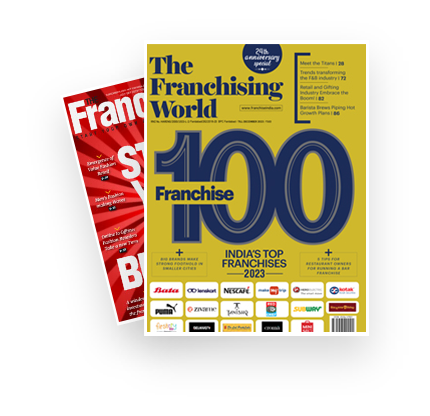
As India’s retail engine roars to life beyond the megacities, trade marketing is fast evolving from a cost‐center to a premium profit driver for consumer goods companies. What was once a back‐office necessity, coordinating staffing rosters, distributing point‐of‐sale materials and ensuring shelf facings, is now at the very heart of margin expansion. With retail hiring on a strong growth trajectory, brands are reallocating resources toward store‐branding, localized activations and shopper‐centric experiences that command higher returns than traditional headcount models. Modern trade marketing, powered by attractive in‐store displays, digital engagement at shelf and hyper‐localized promotions, is delivering much higher ROIs on marketing spend compared to conventional staffing-driven approaches, fueling a virtuous cycle of revenue and profitability.
The competitive landscape of FMCG (Fast Moving Consumer Goods) and FMCD (Fast Moving Consumer Durables) is being reshaped by surging demand in adjoining sectors that feed directly into trade marketing needs. Take the fast growing food processing industry, for instance, this expansion is driving deeper penetration into rural and semi-urban India, creating a raft of opportunities in cold‐chain logistics, in‐market merchandising and demand‐generation roles. Simultaneously, the fashion and textile segment aims to triple its market by 2030—an upswing expected to create a high influx of jobs across manufacturing, retail and design, and requiring sophisticated in-store marketing strategies to differentiate brands. Even the sports and outdoor equipment vertical is witnessing breakneck growth, with a leading retailers expanding their and bringing new merchandising, distribution and promotional‐planning roles online. Within FMCG alone, hiring intent for freshers climbed has increased, with roles in supply-chain management, market research, brand management and logistics coordination topping the charts. In the FMCD space, sales, distribution and retail‐operations professionals are in ever-greater demand, as brands seek to capitalize on evolving consumer preferences with tailored in-store campaigns.
Nowhere is this transformation more striking than in India’s Tier II and III cities, which are emerging as the new retail heartlands. While metropolitan hubs like Delhi NCR, Mumbai, Bengaluru and Chennai continue to anchor brand presence, sky-high real estate costs and market saturation have prompted a strategic shift to smaller cities. Tier II and Tier III are now heralding the next wave of retail expansion over the next five years fostering majority of the new job creation. In this context, trade marketing roles are proliferating in merchandising planning, local‐language activation, micro-market analytics and shopper‐engagement design, positions that demand a fine blend of cultural fluency and data-driven insights.
A powerful driver of this new frontier has been the rise of women in blue-collar retail roles. Digital platforms and mobile-first training modules have dramatically lowered barriers to entry. Employer surveys indicate that 78%of Indian companies intend to hire more women for blue-collar roles in 2025, and sectors such as retail and healthcare already see 32% female representation in frontline positions, compared to 10% in IT and telecom. At the same time, women submitted 28 million job applications in 2024 (a 20% year-on-year rise), signaling an enthusiastic shift toward these high-growth roles. Brands are responding with targeted initiatives like women-only training cohorts, flexible shifts and mentorship programs, which not only foster inclusion but also unlock fresh sources of consumer insight.
This human-capital revolution is being turbo-charged by technology. Frontline teams in modern trade marketing now wield digital toolkits. Cloud-based POS systems, geo-fenced promotional alerts, handheld analytics dashboards and mobile-enabled planogram compliance apps. Meanwhile, specialized skills in artificial intelligence and machine learning have enabled brands to harness demand forecasting algorithms that reduce out-of-stock events and improve promotional ROI. Data-science experts decipher complex shopper datasets to inform hyper-local assortment decisions, while cloud-computing architects ensure real-time inventory updates across thousands of outlets—accelerating replenishment. Cybersecurity professionals safeguard these digital ecosystems, cutting security incidents and protecting brand reputation. The net result is a frictionless shopper journey and an unprecedented leap in margin uplift.
Looking ahead, trade marketing stands at the cusp of its next evolution—The fusion of experiential retail, micro-influencer partnerships and immersive digital microsites, all underpinned by robust analytics and automation. With India’s recent trade agreement with the European Free Trade Association projected to attract USD 100 billion in investments and create 1 million direct jobs over the next 15 years, the stage is set for a sustained boom in trade marketing employment. Brands that invest early in modular activation assets, AI-driven insights and gender-inclusive talent pools will capture the lion’s share of this growth, turning India’s retail boom into a high-margin success story. As a sector, trade marketing is no longer just the glue between production and purchase—it is the engine of profitability and innovation driving India’s retail renaissance.
Contributed by: Mani Sharma, COO, FirstMeridian Global Services

